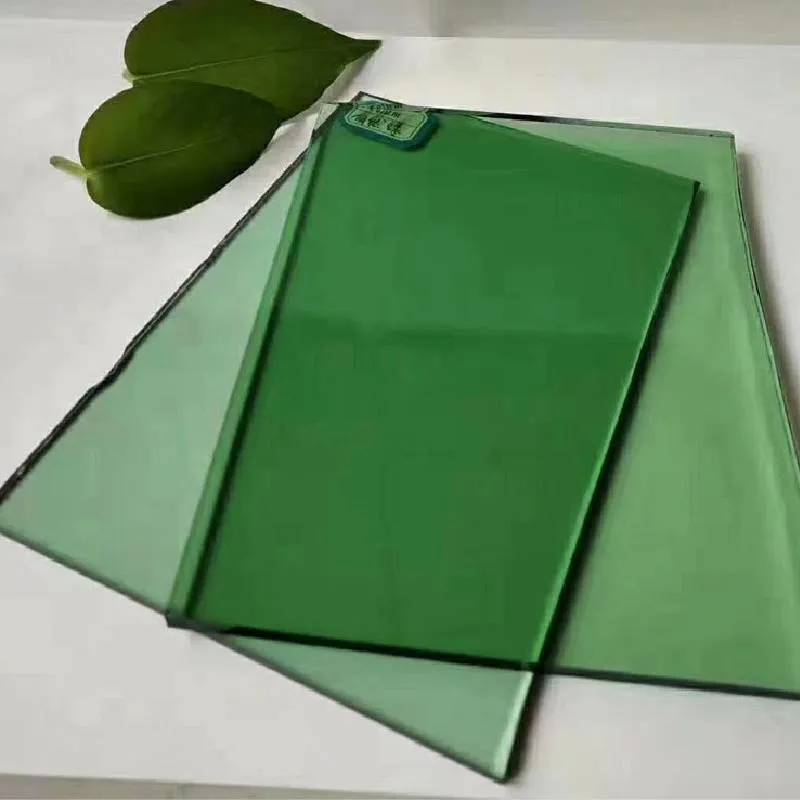The Versatility of Float Flat Glass A Modern Marvel
Float flat glass is an incredible innovation that has found its way into numerous industries, revolutionizing the way we view transparency, safety, and aesthetics. To understand its significance, we must first delve into the processes that create this remarkable material and explore its myriad applications.
The production of float flat glass is a sophisticated and meticulous process. It starts with the melting of raw materials, typically silica sand, soda ash, and limestone, in a furnace at temperatures exceeding 1,700 degrees Celsius. This molten mixture is then floated on a bed of molten tin, which creates a perfectly smooth and flat surface as it cools. This method not only produces glass that is uniform in thickness but also free of distortions, making it ideal for a wide range of uses.
One of the foremost applications of float flat glass is in the construction industry. It is widely utilized in both residential and commercial buildings for windows and facades, allowing natural light to permeate while providing insulation and energy efficiency. With the increasing emphasis on sustainability, low-emissivity (Low-E) glass variants have emerged, which help reduce energy consumption by reflecting heat back indoors during winter and preventing heat from entering during summer. This adaptability leads to a reduction in heating and cooling costs, making buildings more eco-friendly.
float flat glass
In addition to construction, float flat glass plays a crucial role in the automotive industry. Modern vehicles are designed with large glass panels for visibility and aesthetic appeal. Float glass is used in windshields, side windows, and sunroofs, offering safety and durability. Laminated and tempered variants enhance strength and shatter resistance, providing not only protection for passengers but also contributing to the vehicle’s overall design.
The use of float flat glass extends into the realm of interior design and furniture. From glass partitions and tables to decorative mirrors, its versatility allows for creative expression in any space. Designers appreciate its ability to create an illusion of spaciousness, reflecting light and making interiors appear larger and more open. Customization options, including tinted or frosted finishes, further expand its aesthetic appeal, catering to diverse consumer preferences.
Moreover, float flat glass is increasingly being utilized in technology, specifically in screens for smartphones, televisions, and other electronic devices. Its clarity and durability make it a preferred material for manufacturing screen protectors, ensuring that devices withstand the rigors of daily use without compromising functionality.
In conclusion, float flat glass is a testament to modern engineering and versatility. Its applications span numerous fields, from architecture and automobiles to design and technology. As we continue to innovate and prioritize sustainability, the role of float flat glass in enhancing our environments and lives will only grow, making it a cornerstone of contemporary manufacturing and design. This remarkable material not only meets our functional needs but also enriches our visual and aesthetic experiences in everyday life.
 Afrikaans
Afrikaans  Albanian
Albanian  Amharic
Amharic  Arabic
Arabic  Armenian
Armenian  Azerbaijani
Azerbaijani  Basque
Basque  Belarusian
Belarusian  Bengali
Bengali  Bosnian
Bosnian  Bulgarian
Bulgarian  Catalan
Catalan  Cebuano
Cebuano  Corsican
Corsican  Croatian
Croatian  Czech
Czech  Danish
Danish  Dutch
Dutch  English
English  Esperanto
Esperanto  Estonian
Estonian  Finnish
Finnish  French
French  Frisian
Frisian  Galician
Galician  Georgian
Georgian  German
German  Greek
Greek  Gujarati
Gujarati  Haitian Creole
Haitian Creole  hausa
hausa  hawaiian
hawaiian  Hebrew
Hebrew  Hindi
Hindi  Miao
Miao  Hungarian
Hungarian  Icelandic
Icelandic  igbo
igbo  Indonesian
Indonesian  irish
irish  Italian
Italian  Japanese
Japanese  Javanese
Javanese  Kannada
Kannada  kazakh
kazakh  Khmer
Khmer  Rwandese
Rwandese  Korean
Korean  Kurdish
Kurdish  Kyrgyz
Kyrgyz  Lao
Lao  Latin
Latin  Latvian
Latvian  Lithuanian
Lithuanian  Luxembourgish
Luxembourgish  Macedonian
Macedonian  Malgashi
Malgashi  Malay
Malay  Malayalam
Malayalam  Maltese
Maltese  Maori
Maori  Marathi
Marathi  Mongolian
Mongolian  Myanmar
Myanmar  Nepali
Nepali  Norwegian
Norwegian  Norwegian
Norwegian  Occitan
Occitan  Pashto
Pashto  Persian
Persian  Polish
Polish  Portuguese
Portuguese  Punjabi
Punjabi  Romanian
Romanian  Russian
Russian  Samoan
Samoan  Scottish Gaelic
Scottish Gaelic  Serbian
Serbian  Sesotho
Sesotho  Shona
Shona  Sindhi
Sindhi  Sinhala
Sinhala  Slovak
Slovak  Slovenian
Slovenian  Somali
Somali  Spanish
Spanish  Sundanese
Sundanese  Swahili
Swahili  Swedish
Swedish  Tagalog
Tagalog  Tajik
Tajik  Tamil
Tamil  Tatar
Tatar  Telugu
Telugu  Thai
Thai  Turkish
Turkish  Turkmen
Turkmen  Ukrainian
Ukrainian  Urdu
Urdu  Uighur
Uighur  Uzbek
Uzbek  Vietnamese
Vietnamese  Welsh
Welsh  Bantu
Bantu  Yiddish
Yiddish  Yoruba
Yoruba  Zulu
Zulu 

